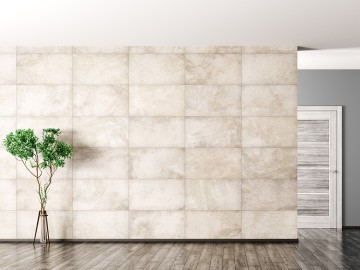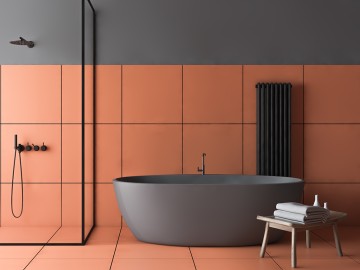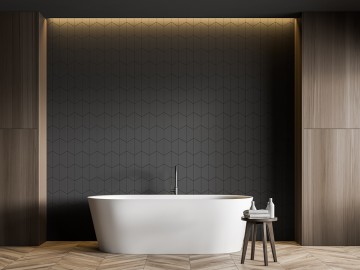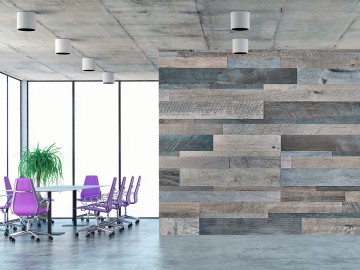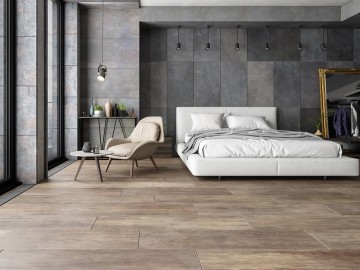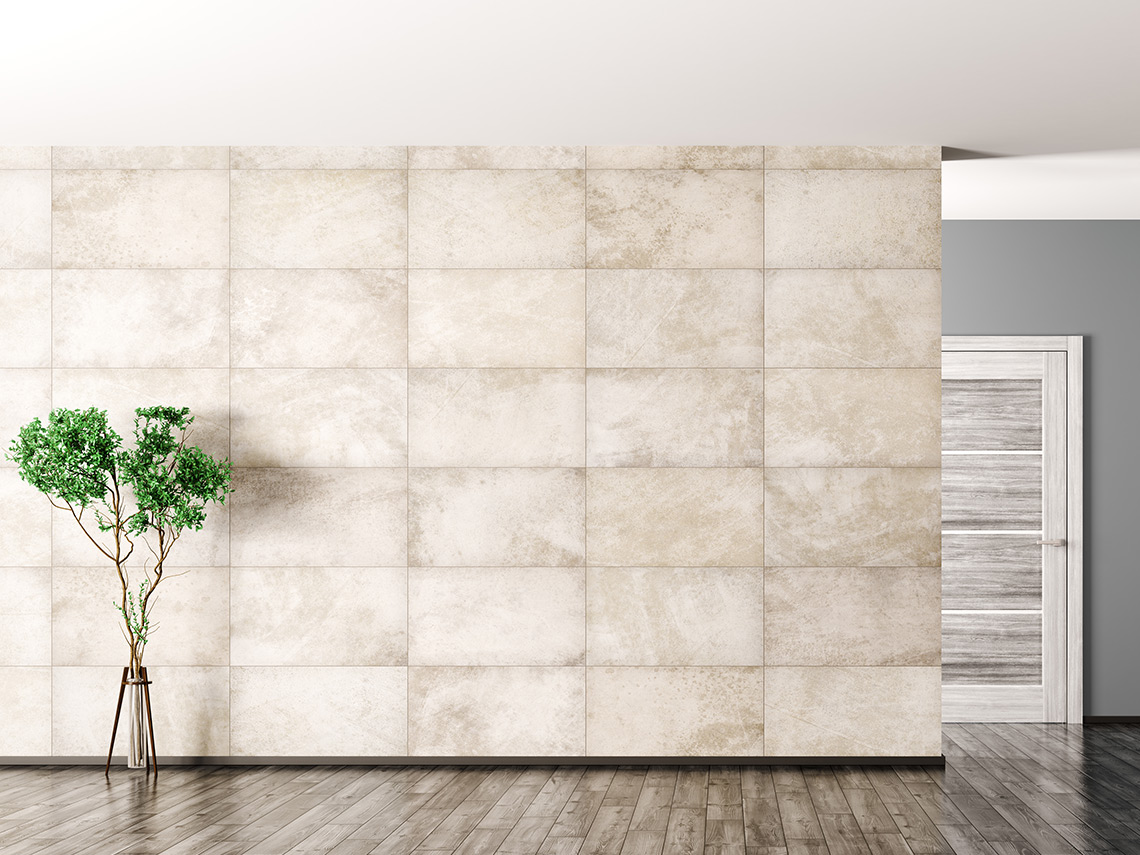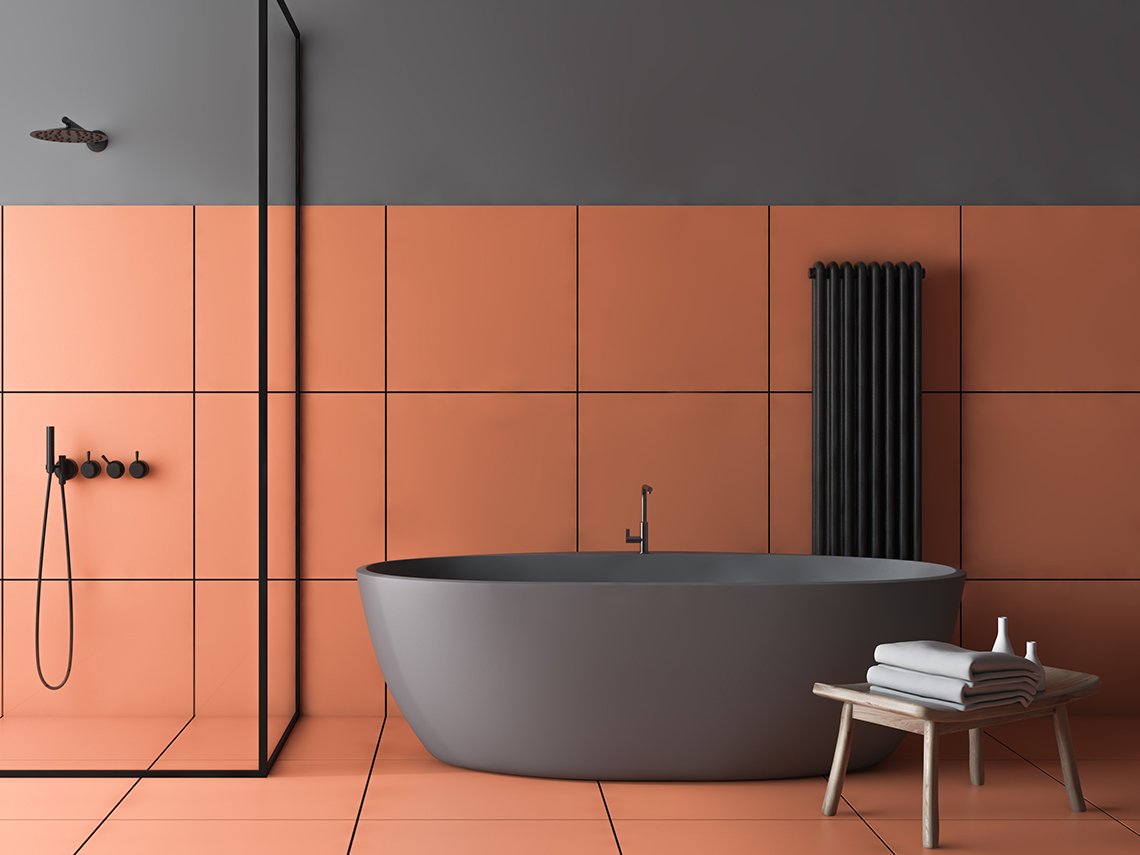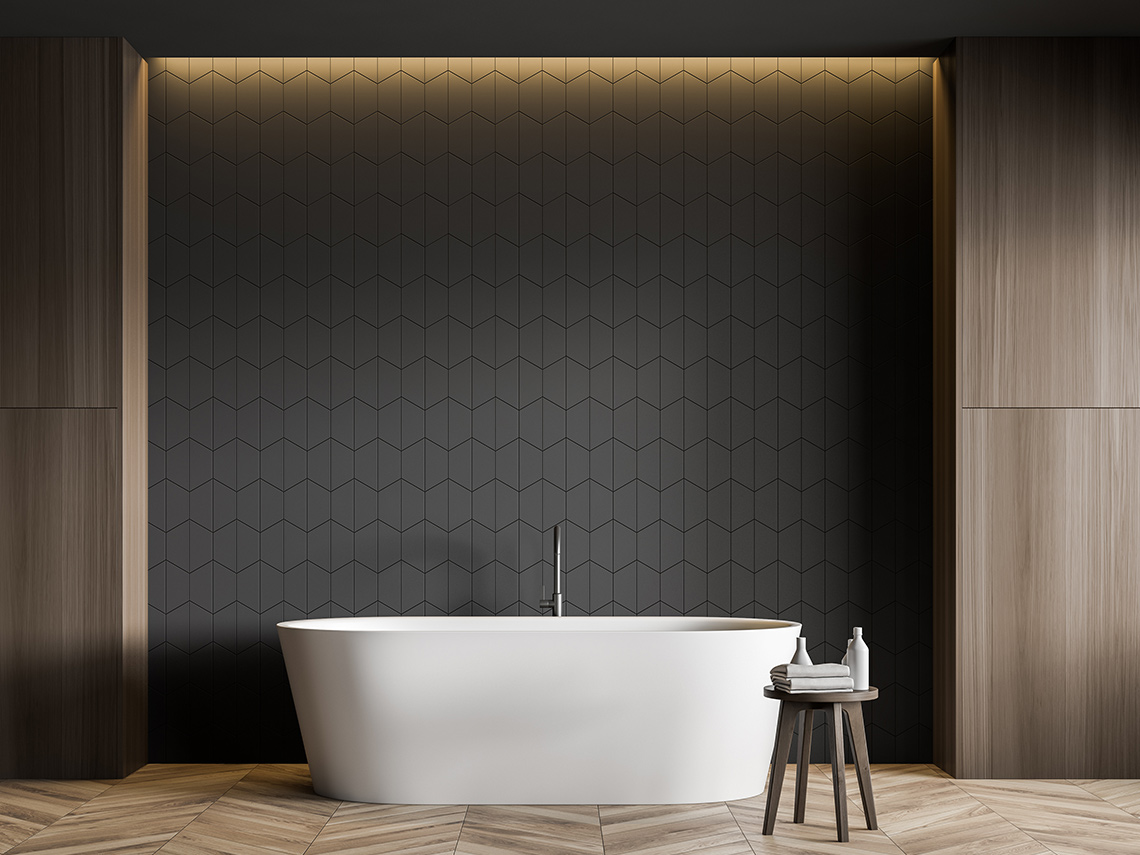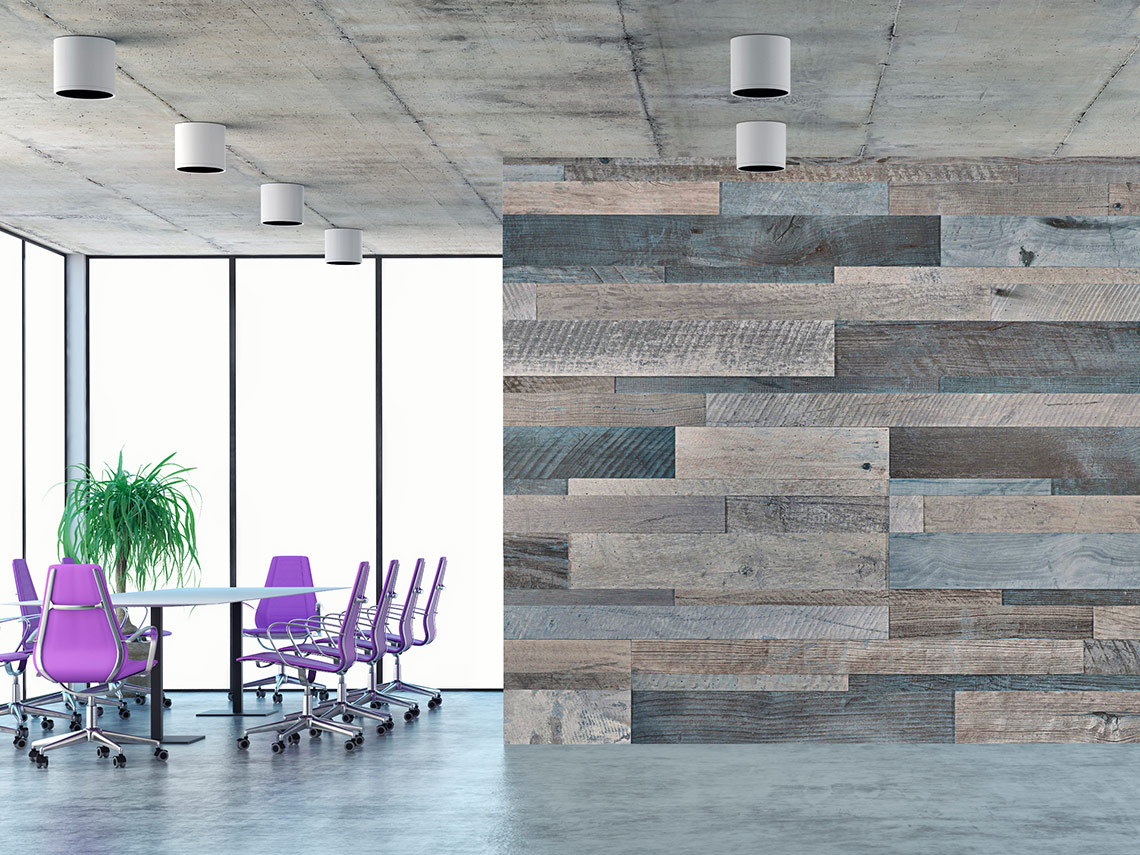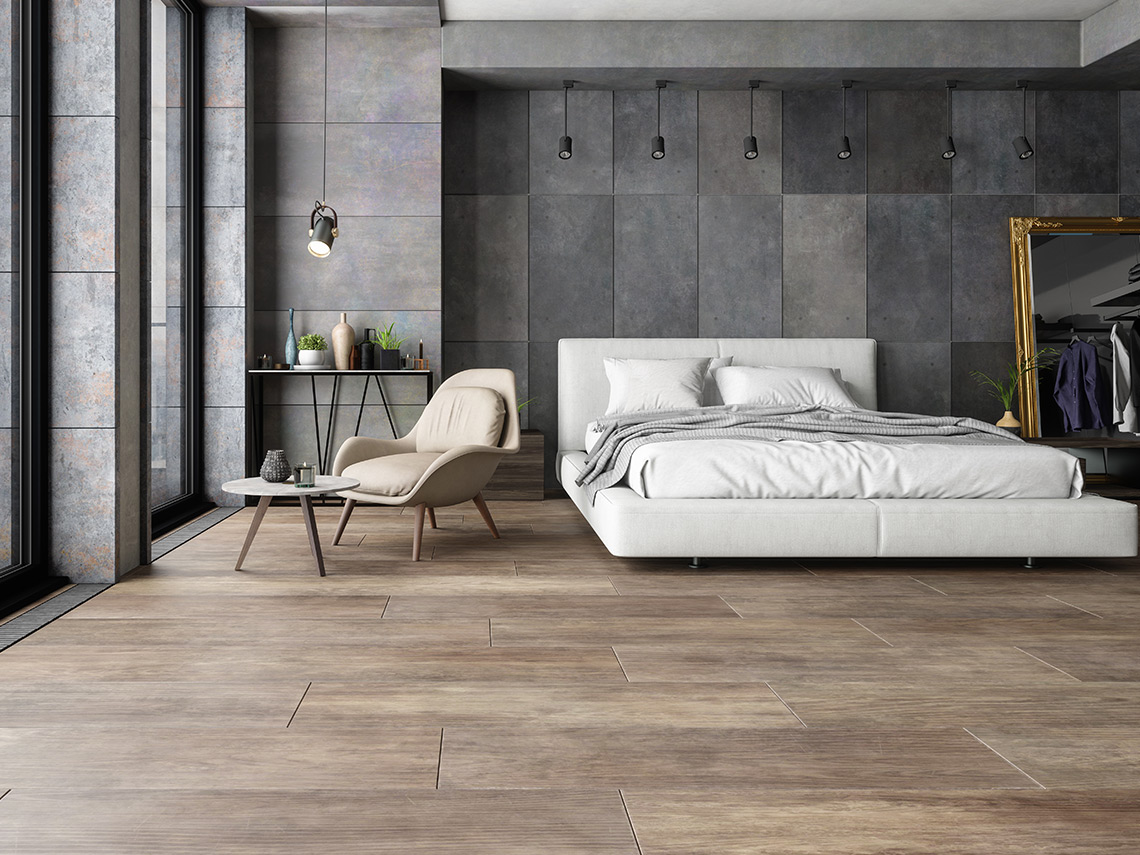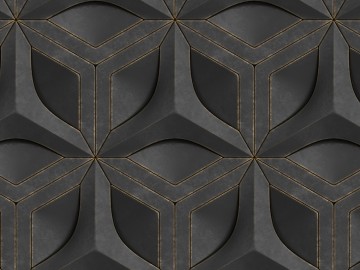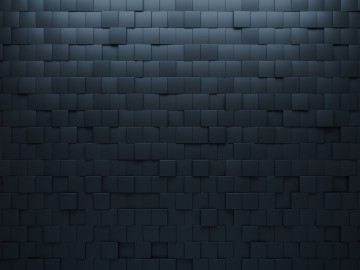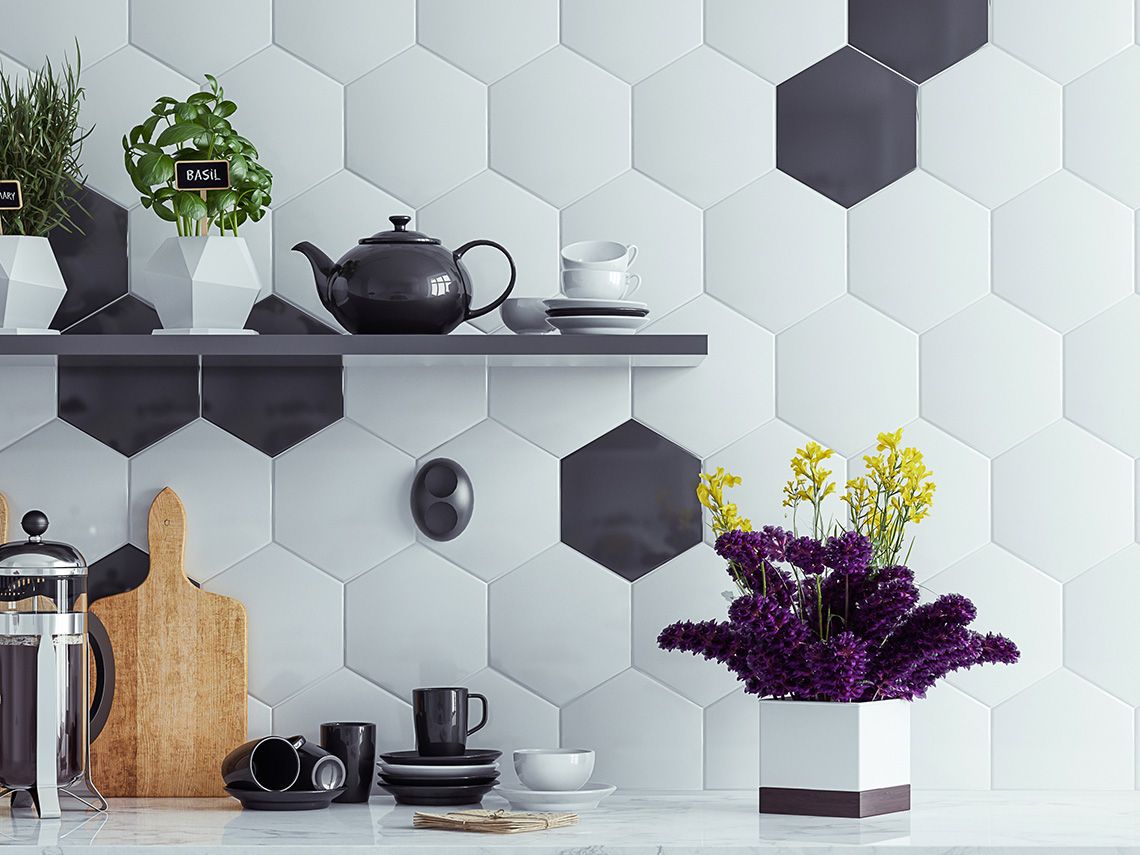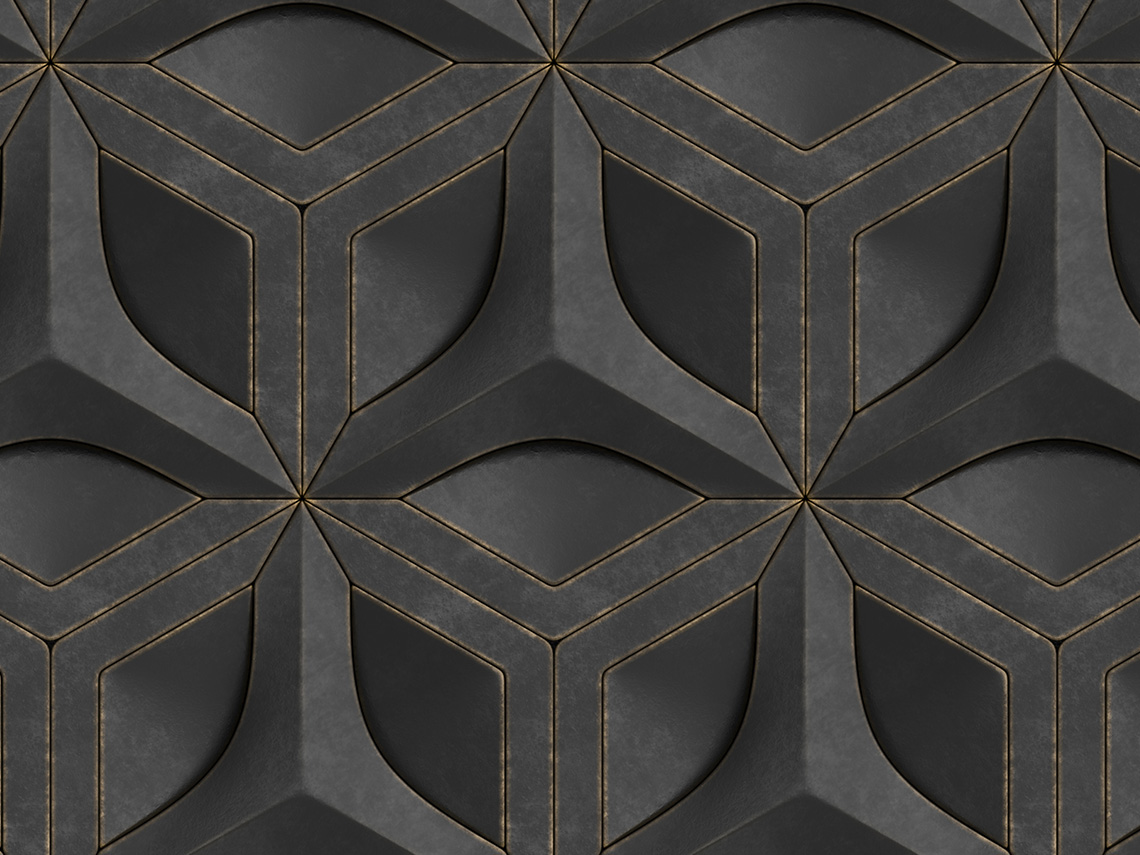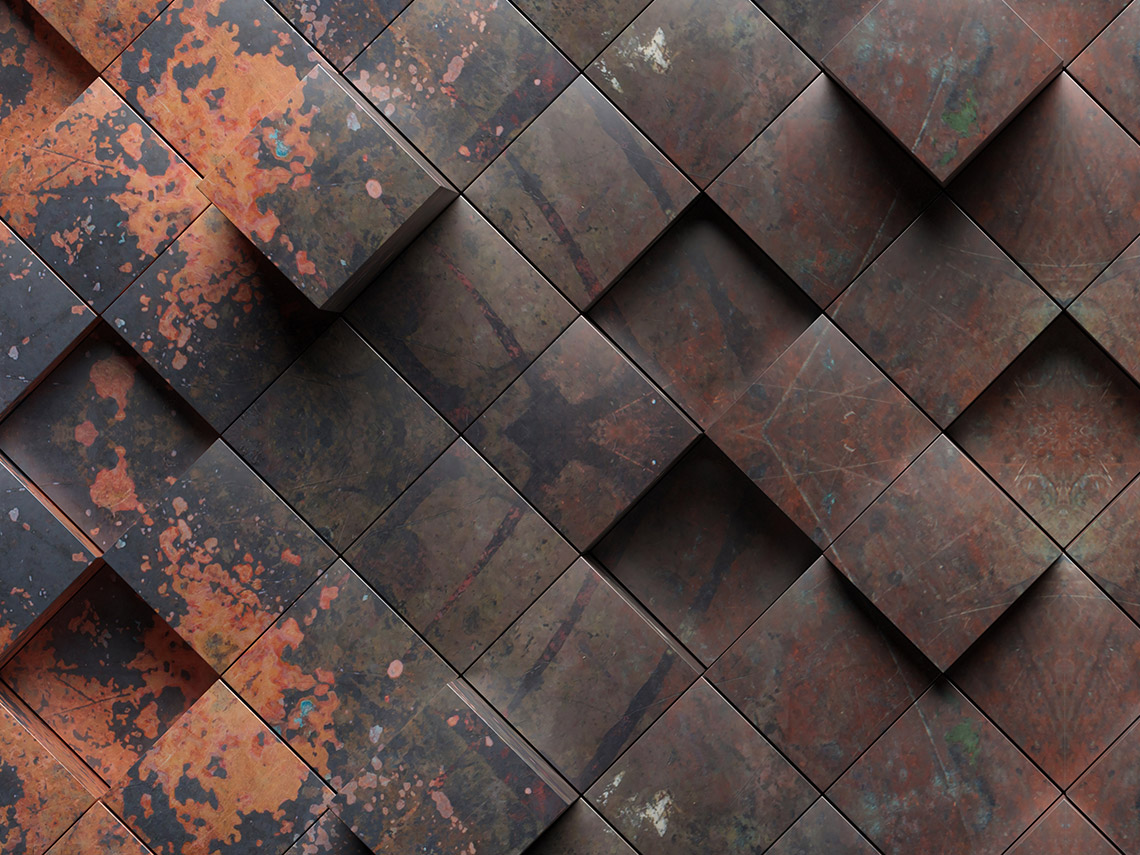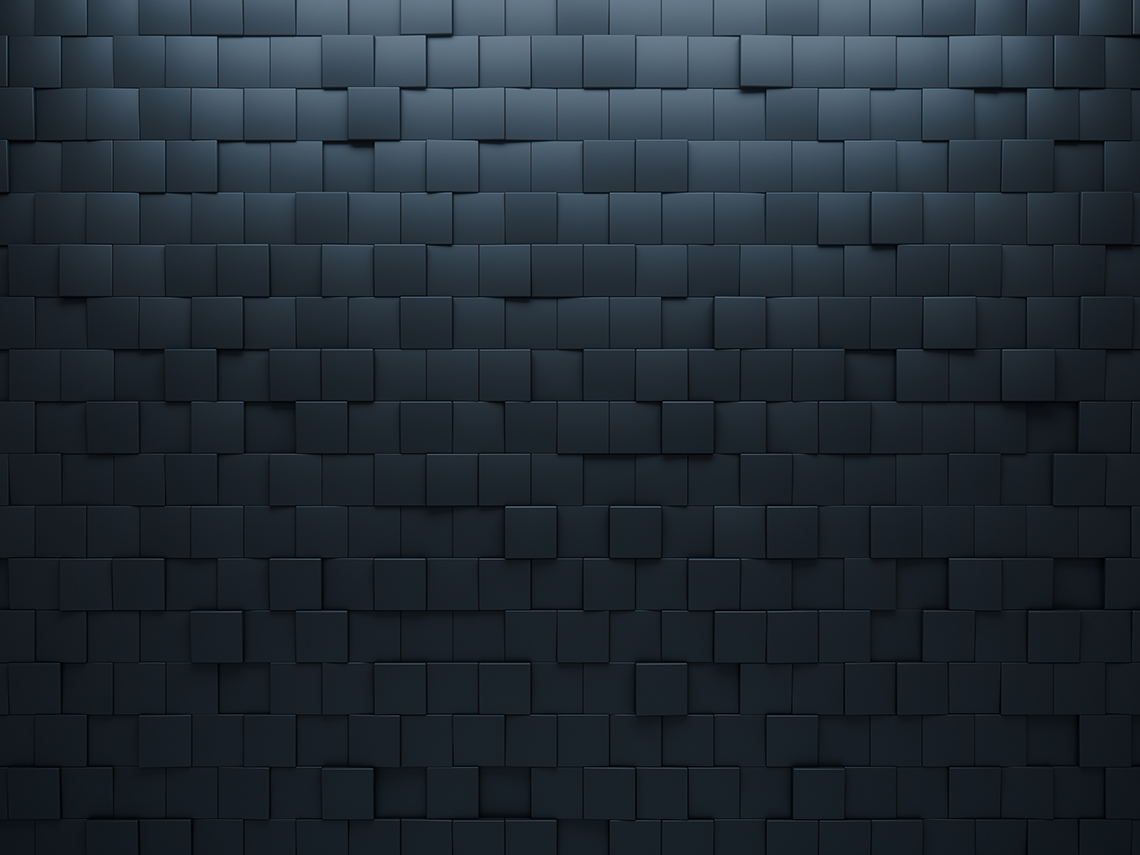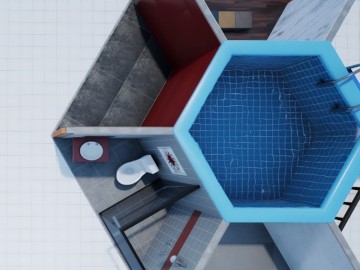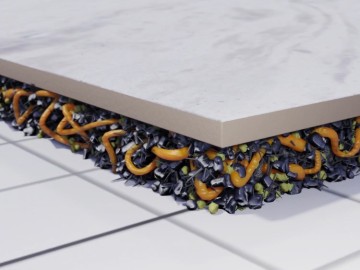
Tiles on the Rise
Tiles are on trend globally. And as their sales increase, so does the choice: modern tiles are made of porcelain, glass, composites or synthetic materials. They look like wood, natural stone or concrete, and come in all shapes and sizes – from tiny mosaic tiles to oversized XXL formats. What does this mean for tile installers? Stay flexible!
Ceramics will account for roughly 52% of floor coverings in 2025.
19 billion square meters (figures in graph in %)
Today, approx. 50% of all floor coverings worldwide are made of tiles. And the trend is on the rise: in Asia alone, all tiled floor, wall and facade surfaces are expected to increase by 7% by 2025; the corresponding figures in Europe and the Americas will each grow by 4%. One reason is increasing urbanization.
At the same time, porcelain tiles are becoming steadily more popular in many countries, because they are universally suitable, hard-wearing and easy to clean. They are also a cost-effective and attractive alternative to popular natural stone. And they open up boundless possibilities in terms of design, shapes and materials.
The Challenge for Tile Adhesives
As tile diversity increases, so do demands on the tile adhesives that are used. In many cases, conventional tile adhesives are no match for modern tiles. They were developed for porous materials such as clay or terracotta and do not adhere to the smooth, dense surfaces of porcelain tiles.
This is where modern chemistry comes in: polymer modification can improve the properties of tile adhesives so that porcelain tiles can even be laid on wood. The ability to explore new areas of application is not the only advantage here, however – polymer modification also offers a way of meeting new demands for how tiles are used. Polymer-modified tile adhesives can, for example, help customers implement new design ideas while saving money, energy and resources.
How do polymeric binders actually work? This video takes you on a short three-minute journey inside a cementitious tile adhesive to demonstrate how polymers improve adhesion, flexibility and impact resistance.
From Cement to Polymer: the History of Tile Adhesive
Traditionally, pure sand-cement mixtures were used for laying tiles on walls and floors. In this process, the cement works its way into the pores of the substrate and the tile, forming a mechanical bond. If the substrate or ceramic tiles are too smooth, this mechanical bond fails. Adding polymer binders such as VINNAPAS® VAE dispersions and dispersible polymer powders can improve the adhesion of the tile adhesive, as the polymer creates a strong yet flexible bond between substrate and tile. Since the choice of polymer type and quantity depends on various factors, modern tile adhesives are offered as ready-to-use dry mixes. These only need to be mixed with water at the construction site.
New Tile Adhesives Reduce CO2 Emissions
Polymer modification has also revolutionized tiling technology. When WACKER developed the first dispersible polymer powders in the 1950s, tiling became much more efficient. The ready-to-use dry-mix mortars that were now possible only had to be mixed with water on-site and applied to the tiles in very thin layers. This change from the thick-bed to the thin-bed method meant that 3 times less material was required on average (from approx. 14 kg/m2 to approx. 4.5 kg/m2). This also means significant CO2 savings, as less material is consumed and transported. But it's not just CO2 emissions that can be reduced with VINNAPAS® modified tile adhesives – they make work more efficient too, because the time required for laying tiles is reduced by 75%.
VINNAPAS® eco: Polymer Binders with a Reduced Carbon Footprint
With VINNAPAS® eco, WACKER offers polymer binders produced from renewable raw materials according to the biomass balance approach. This means that up to 100% of the fossil raw materials in the supply chain are replaced by renewable raw materials that are certified as sustainable. In the case of VINNAPAS® eco dispersions and dispersible powders for tile adhesives, the renewable raw material is bio-based acetic acid. VINNAPAS® eco grades are certified to the REDcert2 standard and audited by TÜV NORD, an independent test organization. This is a first step and a drop-in-solution that can save CO2 emissions right now.
Tile Trend #1: Back to Nature!
Natural Stone and Wood Tiles
Natural stone is tremendously popular as a floor covering. It is visually attractive, appeals to the senses and gives a touch of luxury. For many, however, it is prohibitively expensive. Porcelain tiles are an affordable alternative – especially if the tiles also look like natural stone. Modern digital printing processes make such an option possible: remarkably realistic marble, granite or slate finishes are simply printed onto the tile. The result is in no way inferior in appearance to the original, while at the same time, tiles are easier to clean and more robust than many types of natural stone. Tiles with printed wood finishes are also in vogue: as a substitute for parquet flooring, they spread a sense of comfort and are more hard-wearing than their original counterparts.
Printed tiles are usually porcelain tiles. They have low porosity and a smooth surface, which makes polymer modification of the tile adhesive applied indispensable.
Tile Trend #2: Anything but Standard!
New Shapes and Structures
Gone are the days when tiles were rectangular by default. Today, hexagons, polygons and cubes are becoming increasingly popular. Round and curved shapes are also gaining popularity, as are sculptural 3D tiles with relief-like structures or studs. There’s no question that the trend is toward greater individuality – with porcelain tiles playing a leading role. One thing is certain: with so much diversity, there can, of course, be no standard solution for tile adhesives either. Polymer modification meets the requirements of a wide variety of shapes, structures and types of use.
Tile Trend #3: Big Is Bold!
Big Tiles, Big Challenges
Large tiles are becoming increasingly fashionable. They create visual expanse even in tiny rooms and, due to minimal grouting, make the tiled room appear more tranquil. While so-called XXL tiles with edge lengths of up to 120 x 260 cm are primarily reserved for the premium segment, medium-sized tiles are now prevalent as an inexpensive alternative. In China for example, the standard tile size in dining or living rooms is 80 x 80 cm or even bigger. Yet as the dimensions grow, so do the challenges involved – not only in tile production and transport, but especially in tile installation.
Would You Like to Know Out More about Our Tile Adhesive Solutions?
With WACKER’s wide range of products, you can formulate the perfect tile adhesive. Visit our product section for all the details.
Discover our Products
